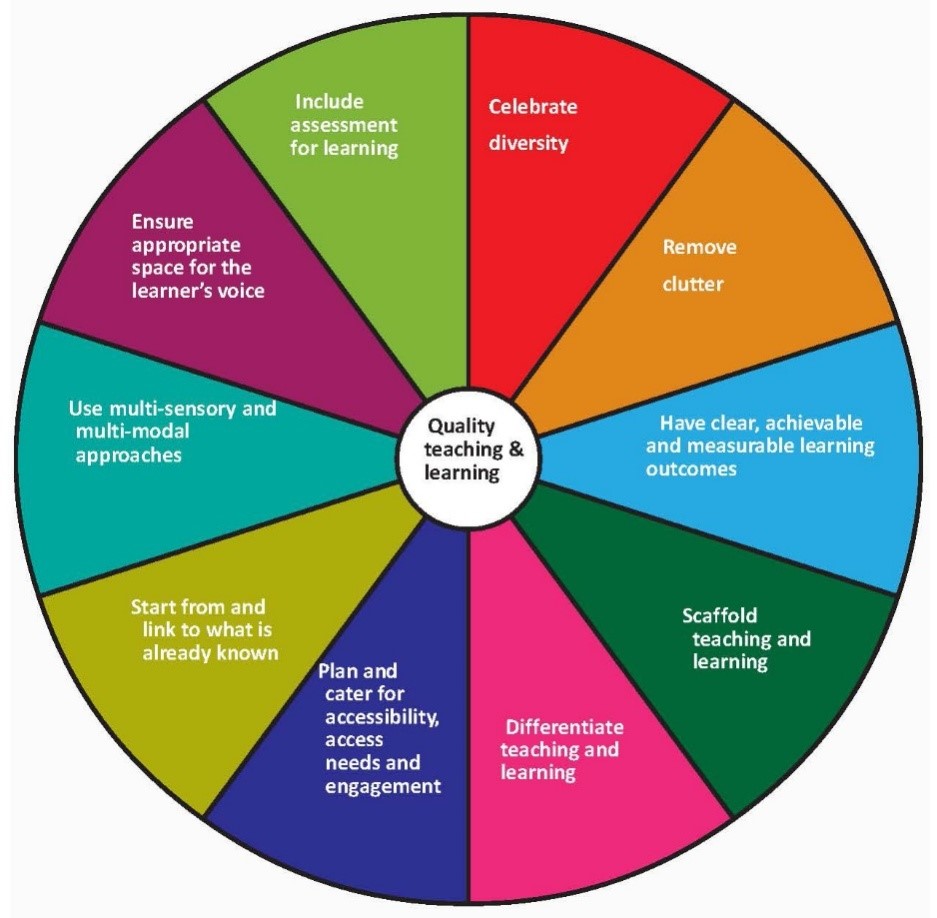How To Promote Teaching And Inclusive Learning For Specific Learning Disabilities
30th September 2024

A persistent condition known as Specific Learning Disability (SLD) is brought on by neurological abnormalities that obstruct the development, integration, and demonstration of verbal and nonverbal abilities. Students with SLD thus struggle to engage with others and are poor communicators. A child must perform in reading, writing, math, or combined abilities two grades below their age-appropriate grade to be diagnosed with SLD. Due to the impairment, the youngster may also display psychological symptoms including manipulating, avoiding, clowning, quitting, and rejecting everything.
How To Promote Inclusivity In the Classroom
To ease her unhappiness with learning, inclusive teaching might begin with the school and instructors creating a welcoming learning environment. This may be accomplished by:
- Providing a supportive, rewarding, and friendly atmosphere
- Supportive cooperation and active learning
- Valuing creativity through innovative activities
- Forbidding violence and physical punishment
- Enhancing school-family collaboration
- Promoting equal participation opportunities for all students
10 Tips To Create Inclusive Classroom Environment For Students With SLD

Here are some effective communication strategies to support students with learning disabilities and achieving academic goals:
1. Multisensory Teaching
For pupils with learning difficulties, multimodal instruction is an effective strategy. It incorporates information from several senses at once, frequently utilizing kinesthetic, aural, and visual learning modes. Students who struggle with dyslexia and dyscalculia may find this method very helpful.
2. Explicit Instruction
An approach that is straightforward and organized, explicit education involves a methodical sequence of skills, plenty of practice, and feedback. This method works especially well for children who require a step-by-step assignment breakdown or who have ADHD.
3. Scaffolding
The goal of scaffolding is to give pupils short-term assistance as they acquire the necessary abilities or information. The more autonomous the pupils get, the less help they receive. Students with a range of learning difficulties benefit from scaffolding, especially those who might have trouble organizing or planning.
4. Accommodations
With the use of accommodations, children with learning difficulties can access the curriculum on an equal basis with their classmates. They alter how the material is delivered or how students can react, but not the topic itself or the degree of accountability. Modified coursework, extra time for exams, or the usage of assistive technology are examples of accommodations.
5. Communication And Collaboration
Supporting kids with learning difficulties requires effective cooperation with special education specialists. Ensuring that the support techniques and accommodations are in line with the student's Individualized Education Program (IEP) or 504 plan may be achieved via regular communication and collaboration.
6. Classroom Arrangement
The way a classroom is set up may have a big impact on how comfortable and involved students with disabilities are in class. It is important to make sure that all students, including those with physical limitations, can enter the classroom. Clear pathways are necessary, and desks that may be adjusted to fit wheelchairs should be considered.
7. Assistive Technology
For students with impairments, having the appropriate tools may make a huge difference in their educational experience. Depending on the needs of the students, incorporate assistive technology into the classroom in the form of screen readers, voice recognition software, or modified keyboards. The usage of these resources should be understood by both teachers and pupils. Frequent seminars or workshops might be helpful.
8. Positive Behavioural Support
Provide a structure that prioritizes growth and positive conduct. Clearly state expectations for conduct and classroom norms, and make sure that every student is aware of them. To recognize and honor good conduct and effort, use a system of positive reinforcement.
9. Continuous Professional Development
Continue to be open-minded and dedicated to lifelong learning. Evaluate your instructional methods and the success of any adjustments provided in the classroom regularly. To keep up to date on the latest practices for inclusive education and disability awareness, participate in professional development.
10. Understand Individual Needs
Recognizing that every kid has a different set of skills and problems is the first step in building an inclusive environment. To determine each student with a disability's unique learning and support requirements, conduct comprehensive evaluations. Establishing a collaboration with special education professionals, parents, and caregivers is crucial. They are excellent resources for knowledge and assistance.
Bottom Line
Not only is it necessary to implement instructional techniques and accommodations for children with learning difficulties, but it also presents a chance to cultivate a rich, supportive learning environment that is beneficial to all students. Because each learner is different, as teachers who have pursued Online Special Education Courses, it is important to keep an open mind and be willing to modify your approach. The pupils you teach will surely benefit from your commitment to fostering an inclusive classroom in the long run.
We believe education should be accessible for everyone. That’s why we don’t charge for our blogs. Find the right course that will help you in your career with us, contact us at - 91-6292150868. You can mail us at act@asiancollegeofteachers.com

